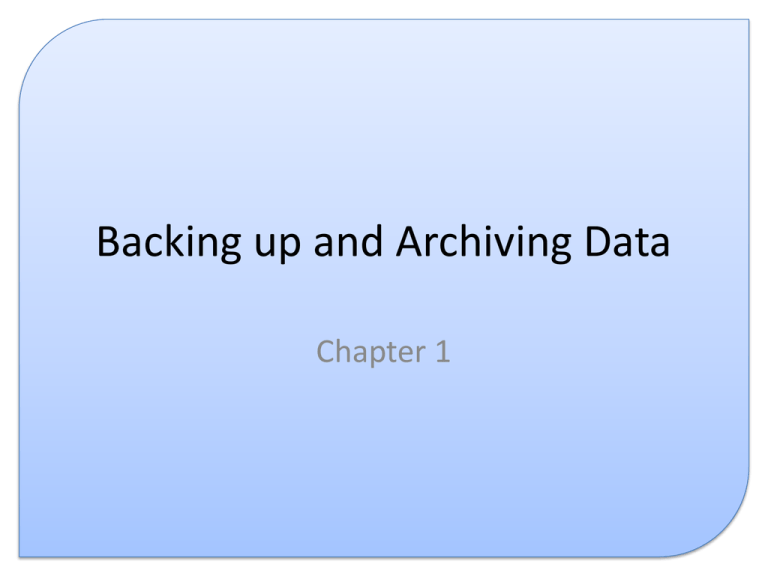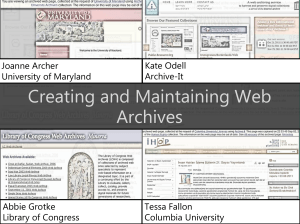Backing up and archiving
advertisement

Backing up and Archiving Data Chapter 1 Introduction • This presentation covers the following: – What is backing up – What is archiving – Why are both necessary? Backing up • Backing up data is a practice that all organisations and people who work with data should do. • Some people consider data to be a company’s most important asset. • The loss of any data can have a detrimental impact on an individual or an organisation (no matter the size). • Backing up data is simply making a copy of current data. Backing up • There are many causes of data loss: – – – – – – – – – – – Loss of power Hardware failure File corruption Viruses Hackers Theft of equipment Sabotage of an employee Espionage by a rival company Natural Disaster Honest blunders! Accidently misplacing data Backing up • Back ups can be used to restore lost files by replacing them with a previously saved file. • You might not always get the most up-to-date file but consider the alternative...starting your work from the beginning again! Methods of backing up • There are many devices which can be used to back up files: – External memory: Memory cards, USB pen drives – External hard drive – Tape – Making an exact copy of a disk Backing up • In the event that you need to find a file which has been backed up you need to be able to find the file you need! • This means that back ups need to be organised. • If you have made several backups of a file you need to be able to tell which is the most recent backup! Things to consider • How often do you need to back up? • How far should your backups go? – Days – Weeks – Months Archiving • Archiving is for long-term storage of data that is not required immediately. • More often than not it is never required again but it kept just in case. • Data is often removed from a system and stored separately. Archiving • Consider the following example: • A school records data about pupils’ performance every year. If they continued to collect data, even after pupils had left school, the system resources would soon diminish. • Instead, records about pupils are removed from the system once they leave. • However, some data may be archived such as average test scores and achievement rates. The data is not needed immediately but may be useful to keep for the future. Archiving • Schools often keep full records about pupils for up to seven years. • Schools often receive requests to complete references and use the data in their archives to compile them. Archiving Procedure • Copy the file onto the archival media. • Verify the copied files (i.e. Making sure the copies are the same). • Delete the original records from the system. Reasons for archiving • Free up system resources – Less hard disk space required • Increase system performance – Searches take less time as their is less data to search through – Takes less time to make backups of the system as there is less to copy! Take note: • Using an example, define what is meant by the term ‘backup’. • Using an example, define what is meant by the term ‘archive’. • Why is it important to back up data? • What is the difference between archiving and back-up of data? • What storage medium should be used for archiving? Remember Archiving is removing! Backing up is copying!











